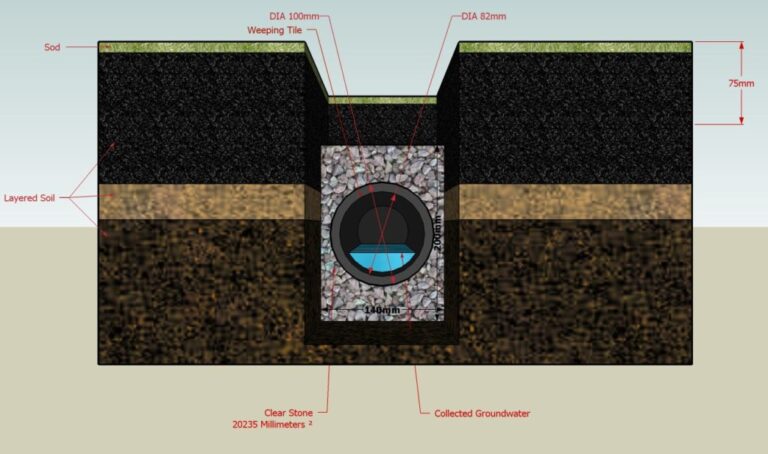How To Charge Battery With Generator
Generators are a great way to keep your batteries charged and provide power when you need it. Knowing how to charge your battery with a generator is essential for keeping your devices running. This guide will help you understand the basics of charging a battery with a generator, including the types of generators available, the correct connections, and safety precautions to take. With this knowledge, you’ll be able to keep your batteries charged and ready to go when you need them.
Understanding Battery Charging
Batteries are the lifeblood of many devices and appliances, but they can also be a source of confusion and frustration. Knowing how to properly charge a battery is a key skill, especially if you plan to use a generator as your power source. To ensure safe and effective battery charging, it’s important to understand the differences between various types of batteries and the various charging processes.
The most common type of battery is a lead-acid battery, which is the type of battery found in most cars and motorcycles. Lead-acid batteries require a slow, steady charge in order to avoid overcharging and damaging the battery. If you’re using a generator to charge a lead-acid battery, it’s important to use a voltage regulator to ensure that the charge rate is appropriate.
Other types of batteries, such as nickel-cadmium and nickel-metal-hydride, require a different charging process. These batteries should be charged in a three-stage process that includes a bulk charge, an absorption charge, and a float charge. This type of charging is more efficient and less likely to damage the battery.
When using a generator to charge any type of battery, it’s important to use the correct voltage and amperage settings. Too much voltage or amperage can damage the battery, so it’s important to consult the owner’s manual or contact the manufacturer for the correct settings.
Knowing how to properly charge a battery with a generator is an essential skill for anyone using a portable power source. Understanding the differences between types of batteries and the proper charging techniques can help ensure that your batteries are charged safely and efficiently.
Advantages of Using a Generator to Charge a Battery
Generators can be a great tool for charging a battery. They provide a source of power when there is no other option, and they can be used to charge a wide variety of battery types. Here are some of the advantages of using a generator to charge a battery:
Firstly, a generator is a very cost-effective way to charge a battery. It is much less expensive than purchasing a dedicated charging device, and it is usually available in a variety of sizes to suit any need. Furthermore, generators are relatively easy to use and maintain, making them a great choice for those who don’t want to purchase a more expensive charging device.
Secondly, using a generator to charge a battery is a much faster process than plugging the battery into a wall outlet. Generators usually produce a higher amount of power, meaning that the battery will charge more quickly. This can be especially useful for charging batteries during emergency situations.
Finally, using a generator to charge a battery is much more efficient than plugging the battery into a wall outlet. Generators are able to produce a higher amount of power, meaning that the battery will charge more quickly. This reduces the amount of time spent charging the battery and allows for more efficient use of power.
In conclusion, there are many benefits to using a generator to charge a battery. It is a cost-effective and efficient way of charging a battery, and it can be used in emergency situations. Additionally, generators are easy to use and maintain, making them a great choice for those who don’t want to purchase a more expensive charging device.
Choosing the Right Generator for Battery Charging
Keeping batteries in top condition is essential to ensure efficient and reliable operation for any electrical equipment. Charging batteries with a generator is a great way to do this, but choosing the right generator is key. With the right generator, you can keep your batteries charged and ready to go.
When looking for a generator to charge batteries, one of the most important factors to consider is the output power. You need to be sure that the generator can generate enough power to charge your batteries. If you are using a standard lead-acid battery, you will need a generator that can output at least 12 volts and around 20 amps. For deep cycle batteries, you may need to increase the output power to 24 volts or higher.
In addition to the output power of the generator, you should also consider the size and weight of the generator. You want to make sure that the generator is lightweight and portable enough to move around as needed. You also want to be sure that the generator is powerful enough to charge the batteries in a relatively short amount of time.
When shopping for a generator, you should also look for one that is designed specifically for charging batteries. These generators are designed to provide the optimum voltage and current to charge the batteries quickly and safely. They also often have safety features such as overload protection and thermal cut-off to ensure that the batteries don’t get damaged during charging.
Finally, you should consider the cost of the generator. Generators can range in price from a few hundred dollars for a basic model to several thousand dollars for a high-end model. It is important to choose a model that fits within your budget but still has the features you need.
By choosing the right generator for battery charging, you can keep your batteries in top condition and ensure reliable operation for your electrical equipment.
Establishing a Safe Charging Environment
When charging a battery with a generator, safety must be the top priority. It’s essential to ensure an environment free of combustible materials and open flames, and that all safety protocols are followed. In addition to these precautions, there are a few other steps you should take to be sure you’re charging your battery safely and effectively.
First, make sure to use the right type of generator for the job. It’s important to understand the voltage and current of your generator and the battery you are charging, as the wrong combination could damage both. Additionally, always double-check the cables you are using to make sure they are properly insulated.
Second, be sure to select the correct charging mode for your battery. Most modern generators offer different charging modes for different types of batteries. For example, lead acid batteries should be charged with a constant current mode, while lithium-ion batteries should be charged with a constant voltage mode.
Finally, be sure to check the charging time and switch off the generator once the battery is fully charged. Overcharging can cause damage to the battery and even lead to a fire. So, setting a timer to switch off the generator when the battery is fully charged is essential.
By following these precautions, you can ensure a safe and effective charging environment for your battery and generator.

Setting Up the Generator for Battery Charging
A generator can be an incredibly useful tool when it comes to charging your battery. But before you start, it’s important to familiarize yourself with the process and ensure that it’s done correctly. In this article, we’ll discuss the best ways to set up the generator for battery charging and provide some helpful tips that will help you get the job done safely and efficiently.
When connecting the generator to the battery, it’s important to make sure that the voltage is correct. Most batteries require 12V to charge, so it’s important to match the output of the generator to the battery’s requirements. Additionally, make sure to turn off the engine and disconnect the spark plug before connecting the generator to the battery.
Once the connection is made, you’ll need to adjust the generator’s output to match the battery’s charging requirements. It’s best to use a digital multimeter for this to ensure accuracy. Additionally, make sure to use the correct cables when connecting the generator to the battery. It’s also important to keep the generator at least three feet away from the battery to avoid potential sparks from the generator.
Finally, it’s important to monitor the process closely. Make sure to check the voltage regularly and adjust it as needed. Additionally, make sure to check the battery’s temperature to ensure that it’s not getting too hot. If it is, you should immediately disconnect the generator and let the battery cool down before continuing.
Following the above steps will ensure that your battery is successfully charged with the generator. Just remember to double-check every step and be careful when working around the generator and battery. Doing so will help you stay safe and get the most out of your generator.
Testing the Battery Charge
Testing the charge of a battery is an important step in the charging process. Knowing how much charge is present in the battery is essential for ensuring that the battery is functioning correctly and will provide the required power to the equipment it is connected to. Although testing a battery’s charge can be done manually, using a generator can provide a more accurate and reliable result.
To use a generator to test the battery charge, you need to be familiar with the voltage output of the generator. This will help you determine the amount of charge that is present in the battery. Once the voltage is set, connect the battery to the generator and monitor the voltage on the battery. If the voltage reads higher than the generator’s output voltage, then the battery is charged. If the voltage is lower, then the battery needs to be charged further.
Once the generator has charged the battery to the desired level, disconnect the battery from the generator and monitor the voltage again. This will provide an indication of how well the generator has charged the battery. If the voltage is higher than the generator’s output voltage, then the battery is fully charged. If the voltage is lower than the generator’s output voltage, then the battery may need to be charged further.
Testing the battery charge with a generator is a quick and easy process that provides accurate results. Furthermore, it saves time and energy, as you do not need to manually monitor the charge of the battery. By following the steps outlined above, you can ensure that your battery is properly charged and will provide the necessary power to the equipment it is connected to.
Maintaining the Generator for Optimal Charging
Have you been looking for ways to keep your car’s battery charged while away from home? A generator can be an excellent way to charge your battery while you’re away. However, it’s important to keep your generator in good shape and follow the proper safety precautions. Here is what you need to know about maintaining your generator for optimal charging.
First and foremost, make sure to use the right size generator for your battery. Using an undersized generator can cause it to work too hard and overheat, while an oversize generator won’t be able to provide the necessary power.
It’s also important to keep your generator clean and free of debris, as this can affect its performance. Regularly check for oil and coolant levels, as well as for any signs of wear and tear. Make sure to replace the air filter and spark plugs as needed.
When you’re using your generator, make sure to keep it properly ventilated. The exhaust gas from the generator is flammable, so it’s important to keep it away from open flames and combustible materials.
Finally, make sure to turn off your generator when not in use. This will help to prevent any unnecessary wear and tear, and will keep the battery from being overcharged.
By following these tips, you’ll be able to ensure your generator is in good working order and can safely charge your battery. Taking the time to properly maintain your generator will enable you to get the most out of it, and keep your battery charged while away from home.
Troubleshooting Common Battery Charging Issues
When it comes to charging a battery with a generator, there are many potential issues that can arise. From voltage and amperage problems to harmonic distortion and overcharging, it’s important to be aware of the most common battery charging issues so that you can troubleshoot quickly and effectively.
The first thing to be aware of is the voltage and amperage of your generator. If the amperage output is too high, it can cause both overcharging and heating of the battery. To avoid this, make sure the generator’s amperage is set to the correct level according to the manufacturer’s guidelines.
Another potential issue is harmonic distortion. This can occur when the generator’s voltage output is not consistent. If the voltage is too low, it can cause the battery to not charge properly or to not charge at all. To fix this, make sure the generator’s voltage output is stable and within the manufacturer’s guidelines.
Finally, overcharging can be an issue when charging a battery with a generator. This occurs when the generator is set to the wrong voltage or amperage and can cause damage to the battery. To prevent this, make sure the generator’s settings are correct and that the charging time is monitored carefully.
By staying aware of the most common battery charging issues, you can ensure that your battery is charged safely and efficiently. With the right precautions, charging your battery with a generator can be a hassle-free process.
FAQs About the How To Charge Battery With Generator
1. Is it safe to charge a battery with a generator?
Yes, it is generally safe to charge a battery with a generator as long as you follow the manufacturer’s instructions. It is important to ensure that the correct type of charger is used for the type of battery being charged.
2. What type of generator should I use to charge my battery?
The type of generator you should use to charge your battery depends on the type of battery that needs to be charged. Different battery types require different levels of power output from the generator. For example, a lead-acid battery requires a lower power output than a lithium-ion battery.
3. How long does it take for a battery to charge using a generator?
The amount of time it takes to charge a battery with a generator depends on the type of battery being charged as well as the size of the battery. Generally, it can take anywhere from a few hours to a few days to fully charge a battery.
Conclusion
Charging batteries with a generator can be a great way to power up your gadgets and equipment in case of a power outage. It is important to make sure the generator is properly set up and connected to the battery in order to ensure safety and efficiency. Additionally, it is important to research the type of generator and battery being used to ensure compatibility and to understand the wattage and voltage requirements. By following the steps outlined in this article, you can ensure that your battery is properly charged with a generator.






